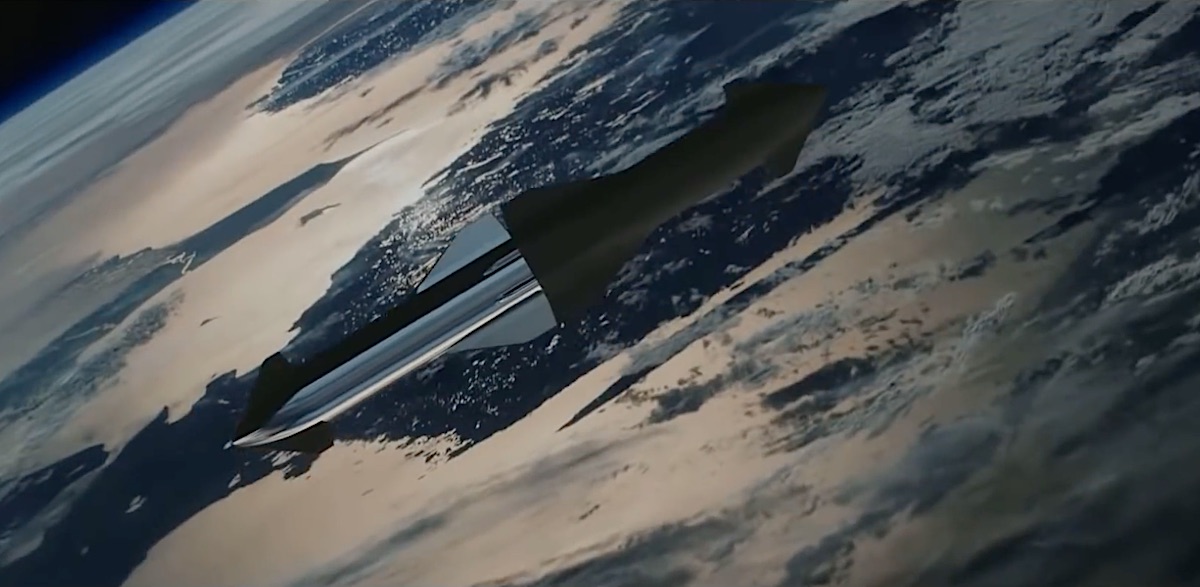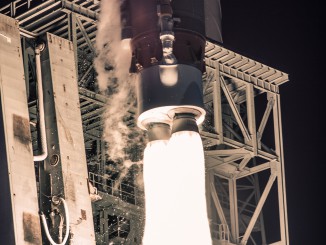
NASA has selected 14 companies for contracts of more than $370 million to advance technology for human missions to the moon and Mars. Most of the money will support flight demonstrations by SpaceX, United Launch Alliance, and other companies that could lead to in-space refueling and propellant depots for reusable lunar landers and deep space transportation vehicles.
The bulk of “Tipping Point” awards announced Wednesday will allow NASA to pay companies to perform technology demonstrations in space, following similar awards in previous years that focused on component development and ground testing.
NASA selected Lockheed Martin, United Launch Alliance, SpaceX and a small Florida-based company named Eta Space for the highest-value awards focusing on cryogenic fluid management, capabilities that could lead to the transfer of super-cold liquid hydrogen, methane, and liquid oxygen propellants between vehicles in space.
Roughly $256 million of the $372 million in NASA Tipping Point awards will support cryogenic storage and refueling technology. The rest is aimed at developing power, precision landing, communications and other systems to support future missions to the surface of the moon.
NASA Administrator Jim Bridenstine said Wednesday that NASA aims to foster development of commercial refueling technology and propellant depots to support exploration of the moon, and eventually human missions to Mars.
“We have an ambition to get to the moon with the next man and the first woman by 2024,” Bridenstine said, referring to the agency’s Artemis program. “We want to be sustainable by 2028. To me, what that means is we want our Human Landing Systems to be reusable by 2028, which means that that we’re going to we’re going to need to have some capability to refuel by 2028.”
Eventually, water ice inside the moon’s polar craters could be tapped to generate rocket fuel, air, water and other resources. In the near-term, the propellant depot and refueling technologies will rely in resources launched from Earth.
“A lot of the companies and academic institutions … they’re going to figure it out, and, and of course NASA stands ready to be a customer in the future,” Bridenstine said.
The space agency said Wednesday it will begin negotiating with each of the Tipping Point awardees negotiate to issue milestone-based firm-fixed price contracts lasting for up to five years.
“A lot of these different architectures and capabilities are going to be dependent on how the private sector innovates,” Bridenstine said at a meeting of the Lunar Surface Innovation Consortium. “This is the reason I think it’s important that NASA partners with private industry and academia, because they’re going to come up with solutions that are exceptionally unique and diverse, and ultimately they’re going to really drive what ends up being those fuel depots, whether they’re in orbit around the Earth, or in orbit around the moon.”

Lockheed Martin was selected for a $89.7 million contract to perform an in-space demonstration using liquid hydrogen to test more than a dozen cryogenic fluid management technologies, positioning them for infusion into future space systems, NASA said. Liquid hydrogen is the most challenging — and most efficient — cryogenic propellant to work with in space because it must be maintained at temperatures below minus 423 degrees Fahrenheit (minus 253 degrees Celsius) to prevent it from converting to a gas and boiling off.
NASA said Lockheed Martin will collaborate with the agency’s Marshall Space Flight Center and Glenn Research Center on the project.
United Launch Alliance will demonstrate a “smart propulsion cryogenic system, using liquid oxygen and hydrogen, on a Vulcan Centaur upper stage,” NASA said. ULA’s award is valued at $86.2 million.
ULA’s next-generation Vulcan Centaur rocket is set to make its inaugural test flight in the second half of 2021.
The company has long promoted in-space propellant depots, and has proposed a more advanced upper stage that could perform missions lasting days or weeks in deep space. The Centaur upper stage currently flying on ULA’s rockets can conduct missions lasting a little more than six hours.
NASA said the smart propulsion cryogenic system will “test precise tank pressure control, tank-to-tank transfer, and multi-week propellant storage.” Engineers at Marshall, Glenn, and NASA’s Kennedy Space Center will work with ULA on the demonstration.

An award to SpaceX worth $53.2 million will go toward a “large-scale flight demonstration to transfer 10 metric tons of cryogenic propellant, specifically liquid oxygen, between tanks on a Starship vehicle,” NASA said.
SpaceX’s Starship is designed to carry more than 100 metric tons of cargo to low Earth orbit. With the docking of a refueling tanker in Earth orbit, SpaceX could refill a Starship with methane and liquid oxygen propellants to fire off to more distant destinations, such as the moon or Mars.
SpaceX will collaborate with Glenn and Marshall on the Starship propellant transfer demo, NASA said.
“When we think about companies like SpaceX and the Starship, their architecture is heavily reliant on the ability to transfer cryogenics in low Earth orbit for the purpose of taking a system all the way to the moon,” Bridenstine said Wednesday. “Their system, in fact, doesn’t appear to require a fuel depot around the moon. Their system would require a fuel depot in orbit around the Earth.”
SpaceX’s Starship is one of three lunar lander concepts selected by NASA in April to carry astronauts to and from the moon’s surface. NASA also selected commercial teams led by Blue Origin and Dynetics to work on Human Landing Systems.
A small company named Eta Space in Merritt Island, Florida, won a $27 million award from NASA for a “small-scale flight demonstration of a complete cryogenic oxygen fluid management system,” the space agency said.
“As proposed, the system will be the primary payload on a Rocket Lab Photon satellite and collect critical cryogenic fluid management data in orbit for nine months,” NASA said. “The small business will collaborate with NASA’s Marshall Space Flight Center in Huntsville, Alabama, NASA’s Glenn Research Center in Cleveland, and NASA’s Kennedy Space Center in Florida.”
Rocket Lab’s Photon spacecraft platform is designed to launch on top of an Electron rocket. Rocket Lab announced last month that it successfully launched the first Photon spacecraft, which is designed to host Earth observation sensors, communications payload, and scientific experiments on missions to Earth orbit and beyond.
NASA has already contracted with Rocket Lab to fly a small research mission named CAPSTONE to orbit the moon next year using an Electron rocket and Photon platform.

NASA selected Masten Space Systems to demonstrate precision landing, hazard avoidance, and a universal chemical heat and electrical power source attachment to help payloads survive the two-week lunar night. Masten’s two agreements are cumulatively valued at $12.8 million.
With a $41.6 million award, Intuitive Machines will develop a deployable hopper lander capable of carrying a 2.2-pound (1-kilogram) payload more than 1.5 miles (2.5 kilometers) across the surface of the moon, enabling exploration of craters out of reach of larger, conventional rovers.
Alpha Space Test and Research Alliance of Houston will get around $22.1 million from NASA develop a space science and technology evaluation facility to give smal experiments access to the lunar surface, and Maxar Technologies won $8.7 million in NASA funding to help develop a lighter and less expensive robotic arm for operations on the moon’s surface, in orbit, and on Earth.
Nokia will receive a NASA contract to provide $14.1 million to support early-stage research into the first LTE/4G communications network in space, which NASA says could support long-distance communications across the lunar surface.
Sierra Nevada Corp. won $2.4 million to develop demonstration hardware that uses methane and concentrated solar energy to extract oxygen from lunar soil, according to NASA.
NASA also selected Astrobotic, pH Matter, Precision Combustion, and Teledyne Energy Systems for awards focusing on testing wireless charging technology and regenerative power-generating fuel cells for potential use on the moon.
“I think there are two things that are critically important,” Bridenstine said. “We need power systems that can last a long time on the surface of the moon, and we need habitation on the surface of the moon.”
Email the author.
Follow Stephen Clark on Twitter: @StephenClark1.



